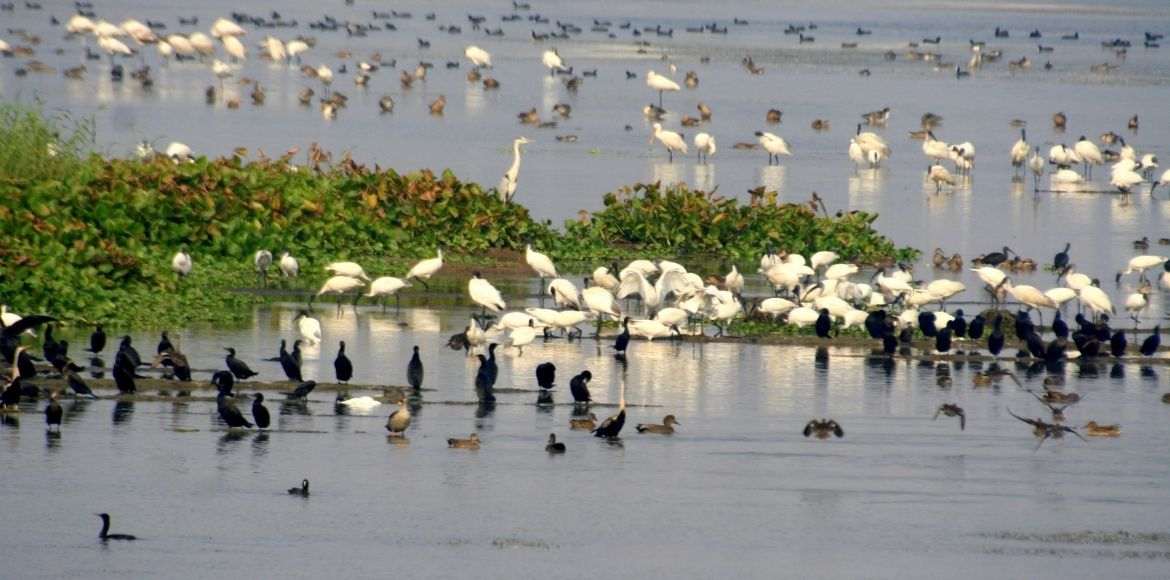Jammu & Kashmir
Asian Water Bird Census
- 19 Feb 2025
- 5 min read
Why in News?
The Department of Wildlife Protection, in collaboration with the Wular Conservation and Management Authority (WUCMA), is going to conduct the Asian Waterbird Census 2025 in Kashmir.
- This annual initiative helps estimate the population of migratory birds visiting Kashmir’s wetlands and assess the ecological health of these vital habitats.
Key Points
- Significance of Kashmir’s Wetlands:
- The Central Asian Flyway was highlighted as a major migration route used by birds traveling from Russia, Siberia, Europe, and China.
- The migratory patterns of birds arriving in Kashmir’s wetlands between November and March.
- The importance of Kashmir’s wetlands as critical stopover points for migratory birds.
- Census as a Scientific Exercise:
- The census is described as a crucial scientific initiative. Bird migration serves as a key indicator of wetland health.
- Over the past two years, officials have recorded more than 12 lakh migratory birds in Kashmir’s wetlands, reaffirming their global ecological significance.
- Coverage of Key Wetlands:
- The Asian Waterbird Census 2025 will include 25 key wetlands.
- It will cover four Ramsar sites, Hokersar, Haigam, Shallabugh, and Wular Lake—each serving as a vital habitat for thousands of migratory birds.
- Execution of the Census:
- Trained personnel from the Wildlife Department, WUCMA, Forest Protection Force, and Forest Department will conduct the census under strict supervision.
- Avian experts will analyze the collected data after the field survey.
- They will compile a comprehensive report on species diversity, population trends, and wetland health.
- This report will help shape future conservation policies and wetland management strategies.
The Asian Waterbird Census
- About:
- It is a citizen-science programme supporting conservation and management of wetlands and waterbirds worldwide.
- AWC is part of the global International Waterbird Census (IWC) coordinated by Wetlands International.
- AWC runs in parallel with other regional programmes of the IWC in Africa, Europe, West Asia, the Neotropics and the Caribbean.
- It is a citizen-science programme supporting conservation and management of wetlands and waterbirds worldwide.
- AWC in India:
- It was initiated in the Indian subcontinent in 1987 and since then has grown rapidly to cover major regions of Asia, from Afghanistan eastwards to Japan, Southeast Asia and Australasia.
- In India, AWC is jointly coordinated by the Bombay Natural History Society (BNHS) and Wetlands International.
- Significance:
- It gives an idea of the birds at the wetland and the health of the wetland; the more the waterbirds, the more suitable the wetland is.
- It helps in better implementation of the Convention on Migratory Species (CMS) and the Convention on Biological Diversity‘s (CBD).
The Central Asian Flyway (CAF)
- It is a migration route, covering over 30 countries, for different waterbirds linking their northernmost breeding grounds in Russia (Siberia) to the southernmost non-breeding (wintering) grounds in West and South Asia, the Maldives and British Indian Ocean Territory.
- CAF is among the nine flyways in the world and three of the nine flyways that pass through the Indian Subcontinent. The other two are:
- East Asian Australasian Flyway (EAAF) and Asian East African Flyway (AEAF).
- India has a strategic role in the flyway, as it provides critical stopover sites to over 90% of the bird species known to use this migratory route.
- Flyways are the area used by a group of birds during their annual cycle which includes their breeding areas, stop over areas and wintering areas.





